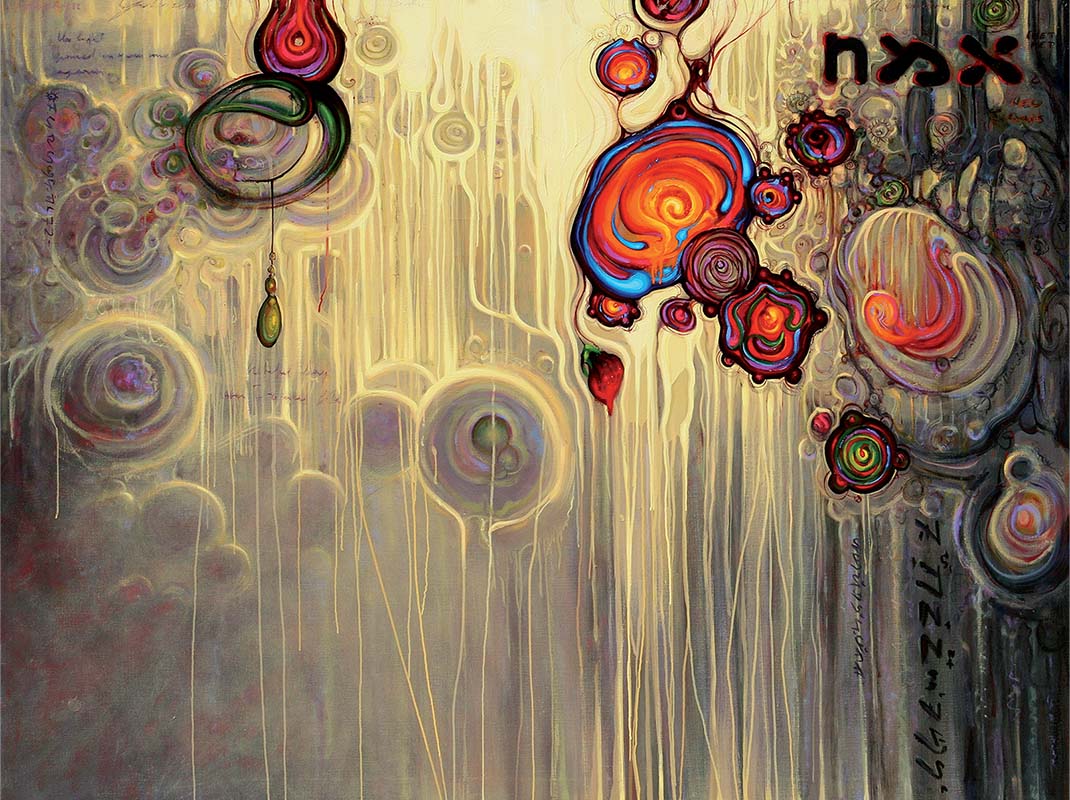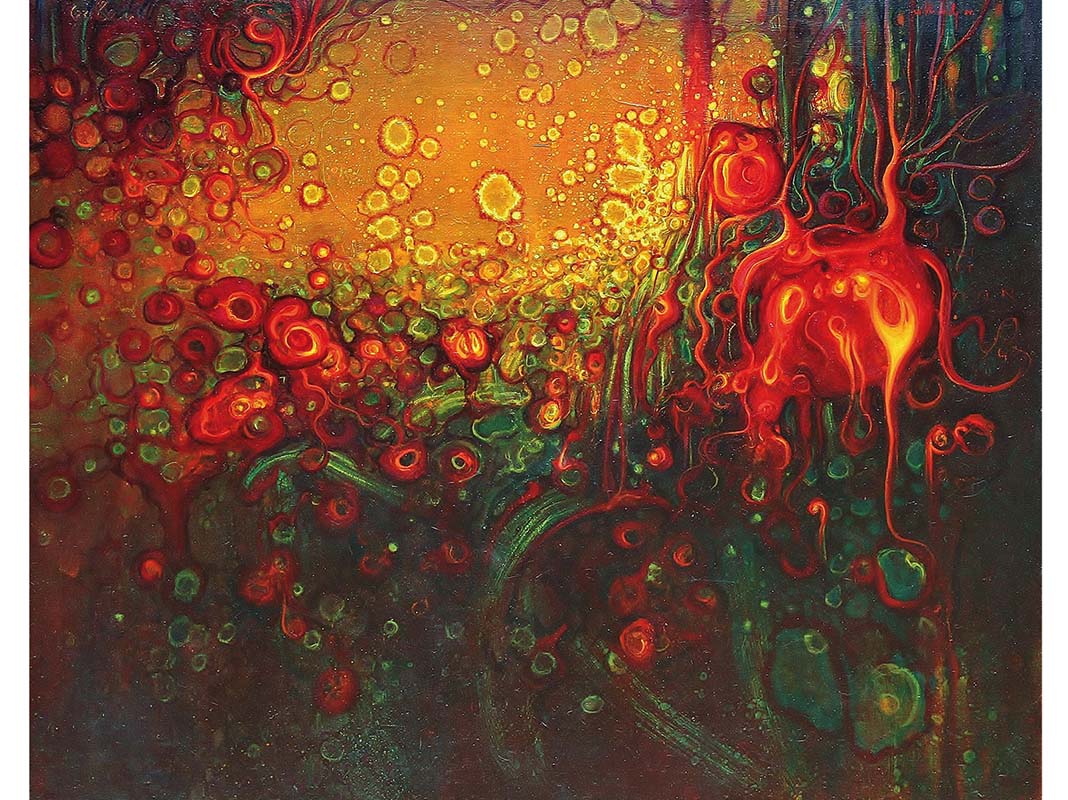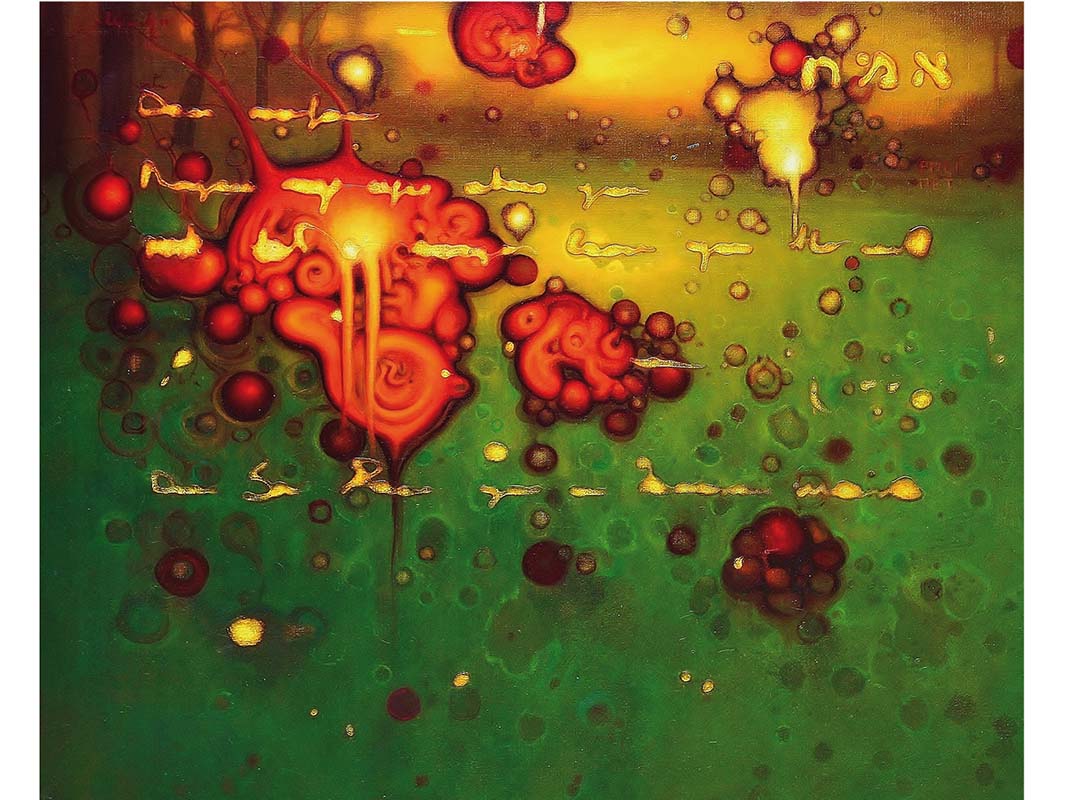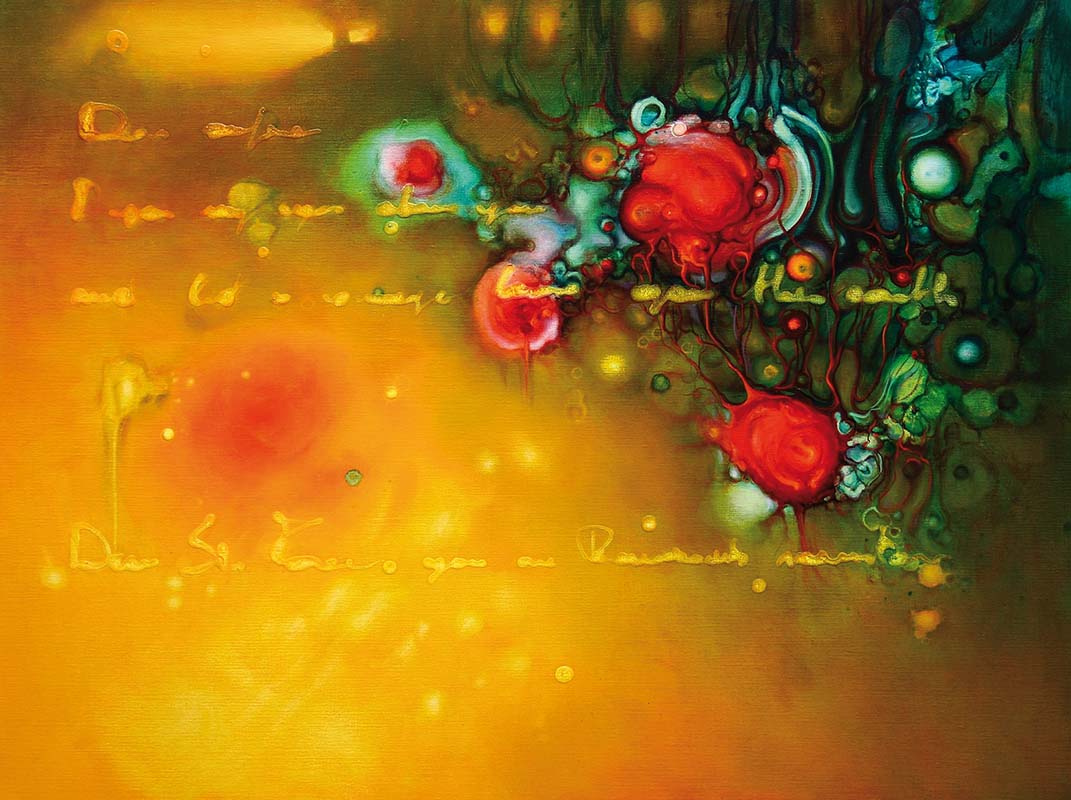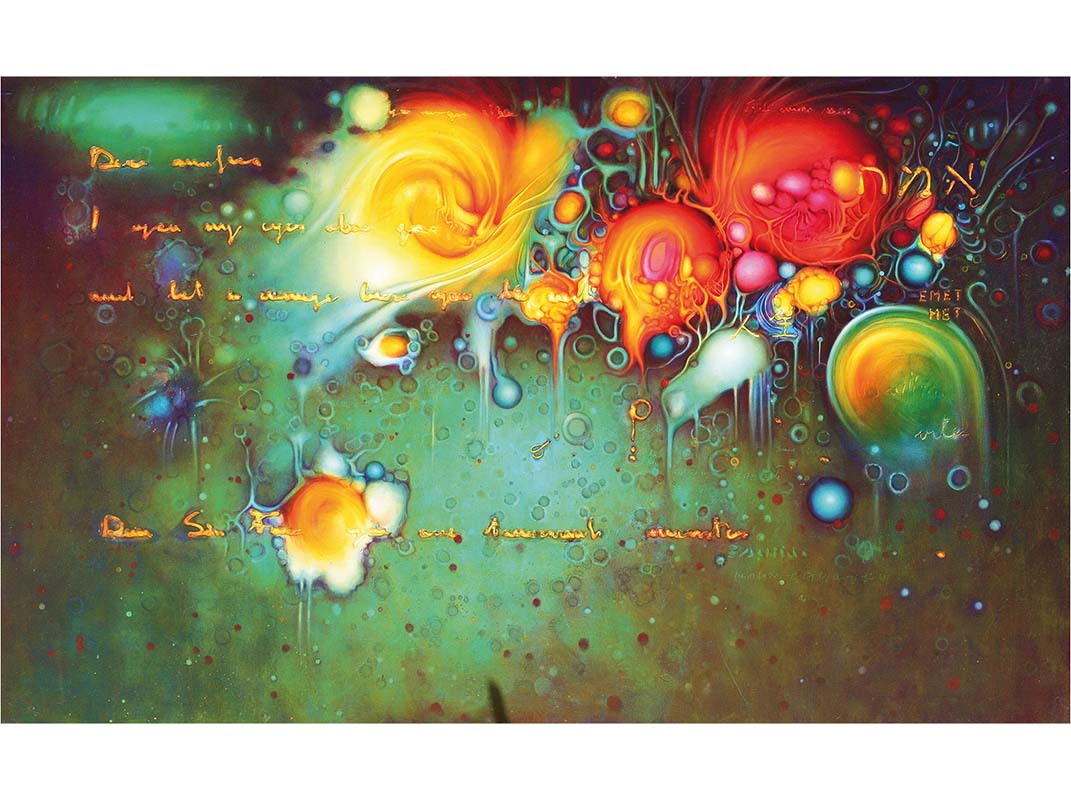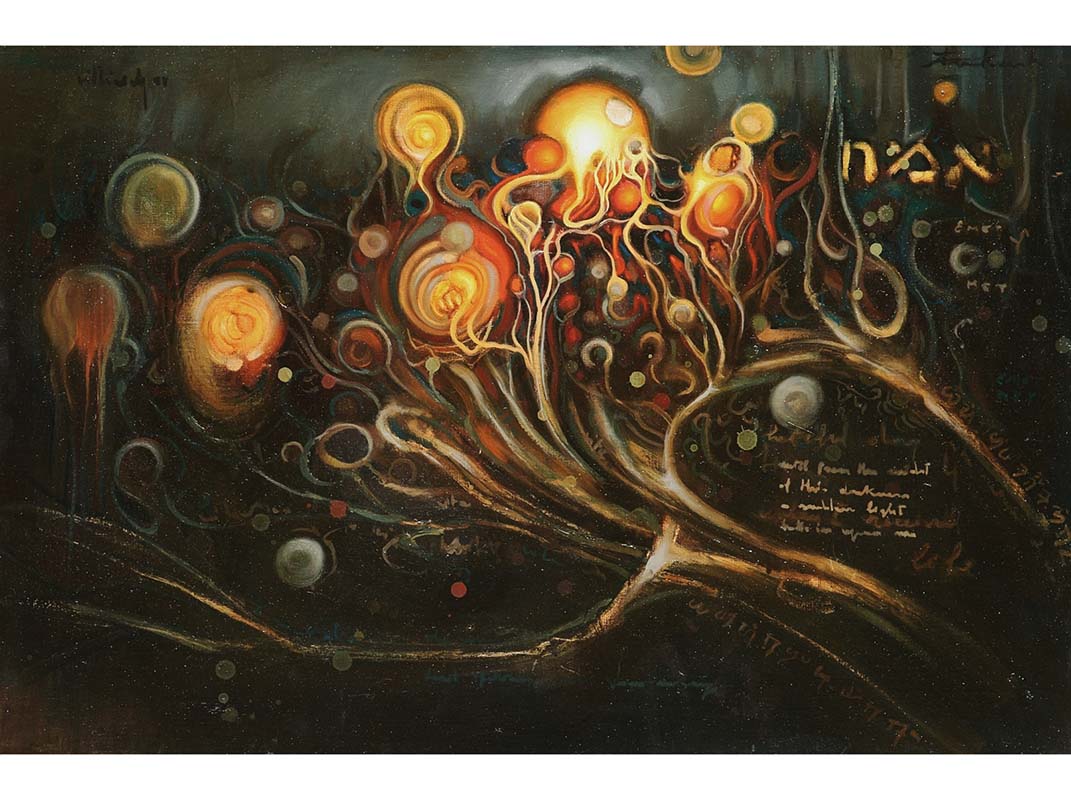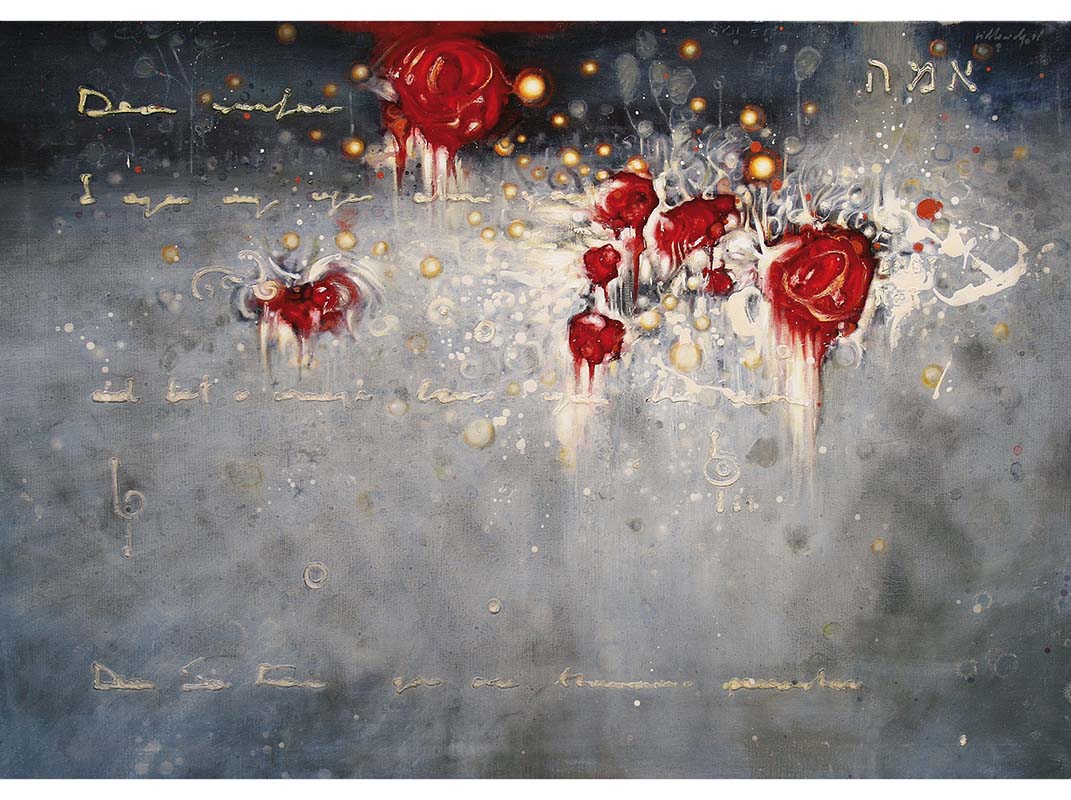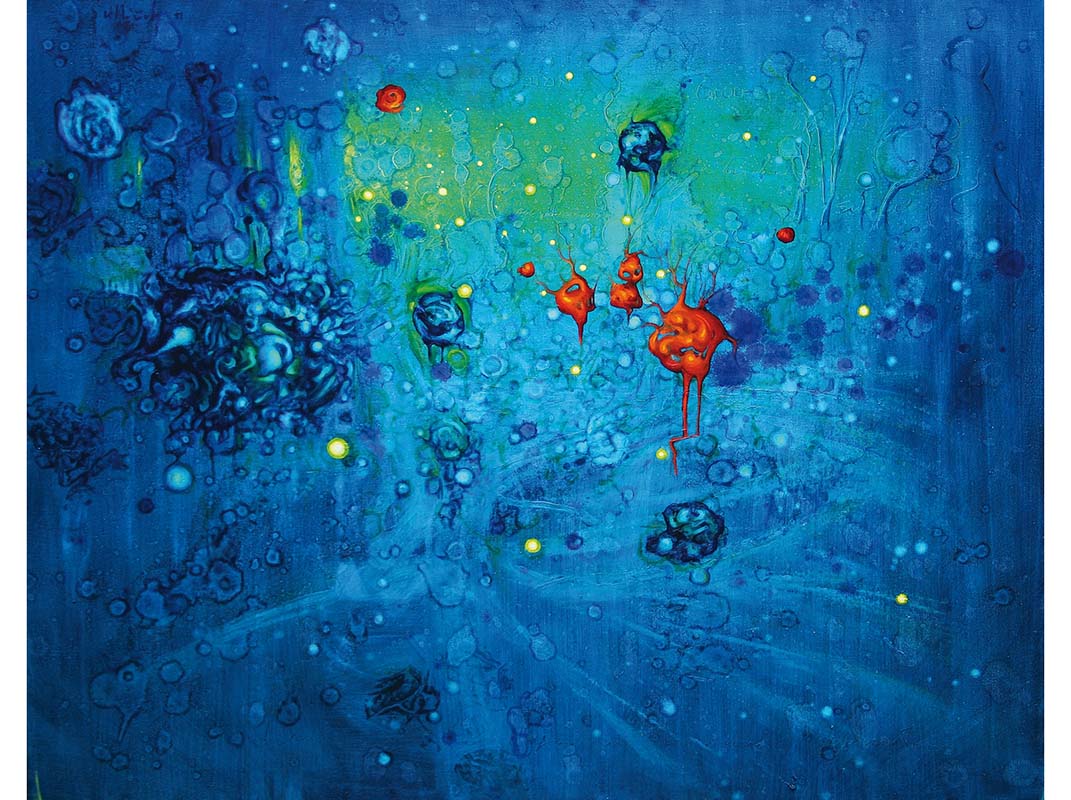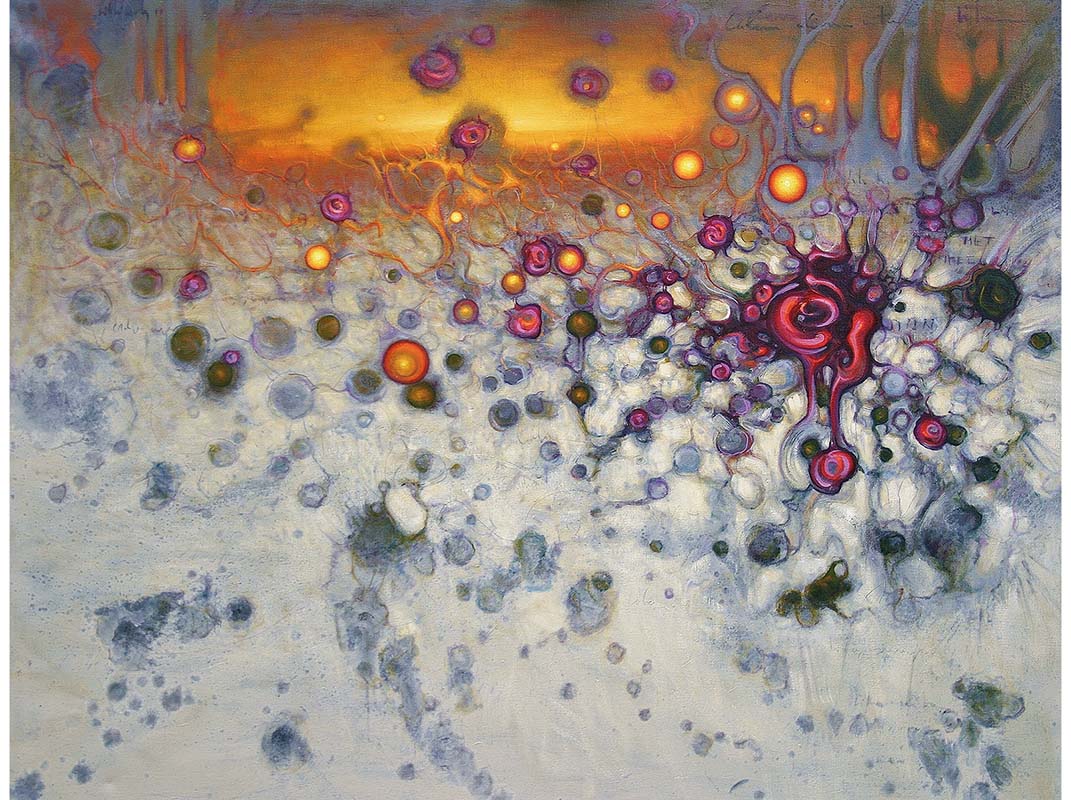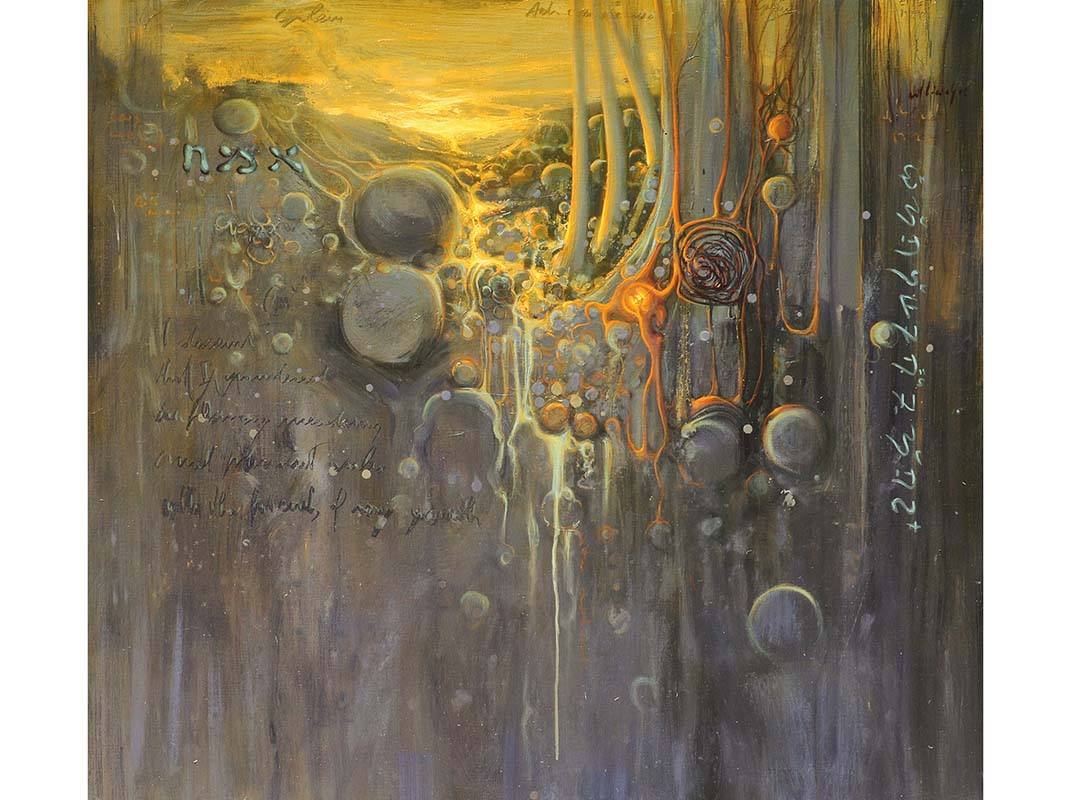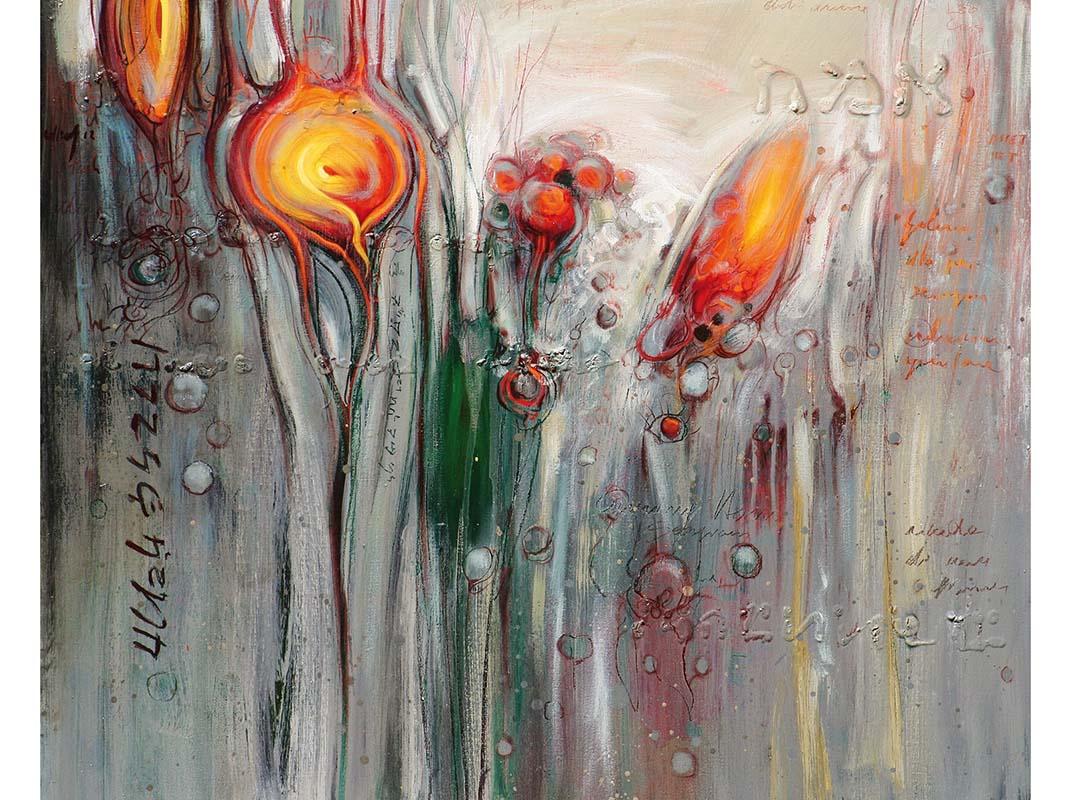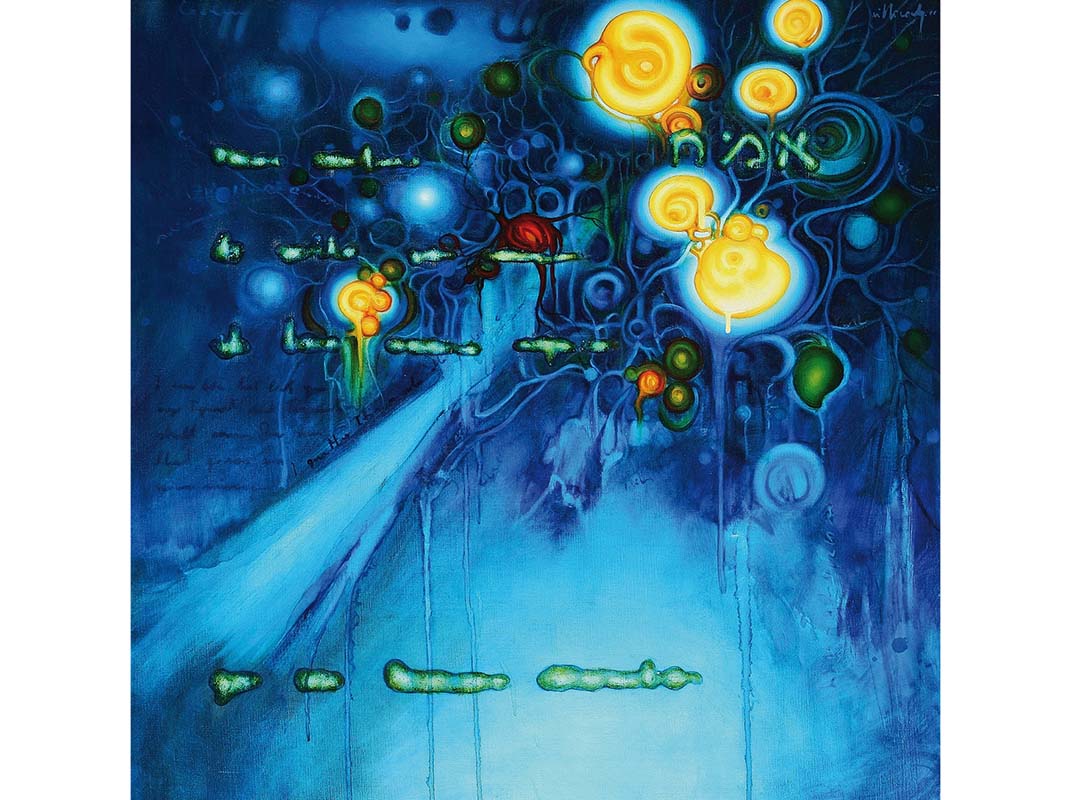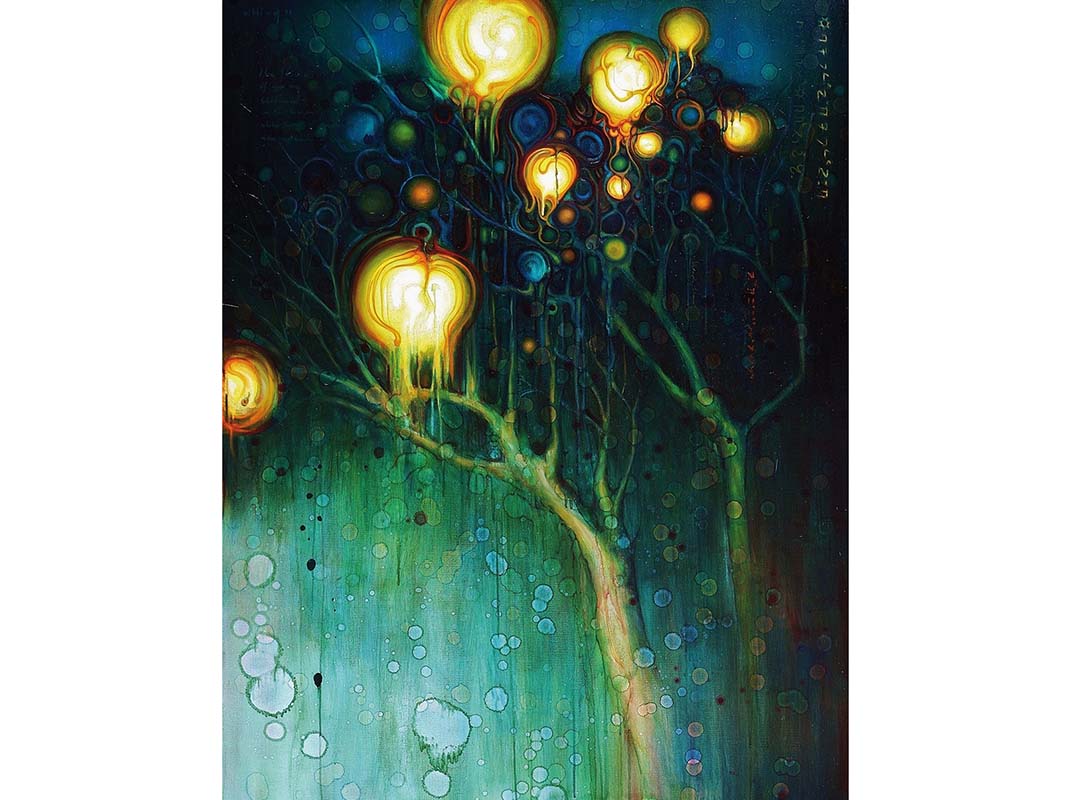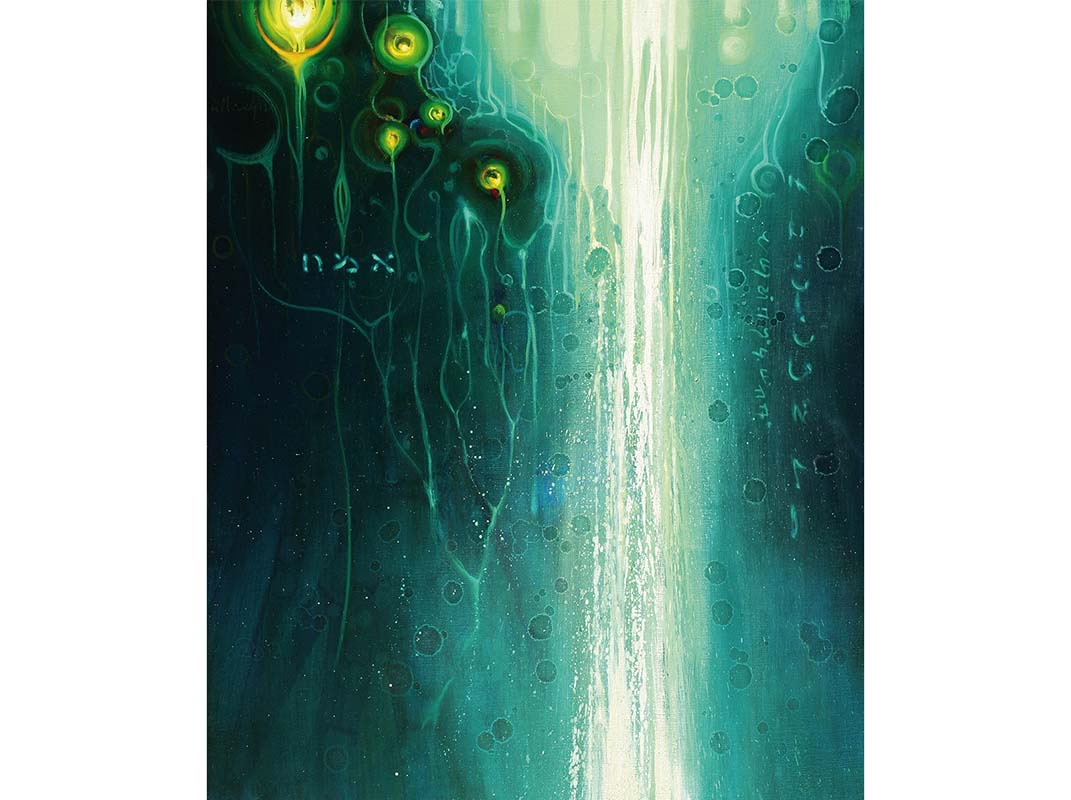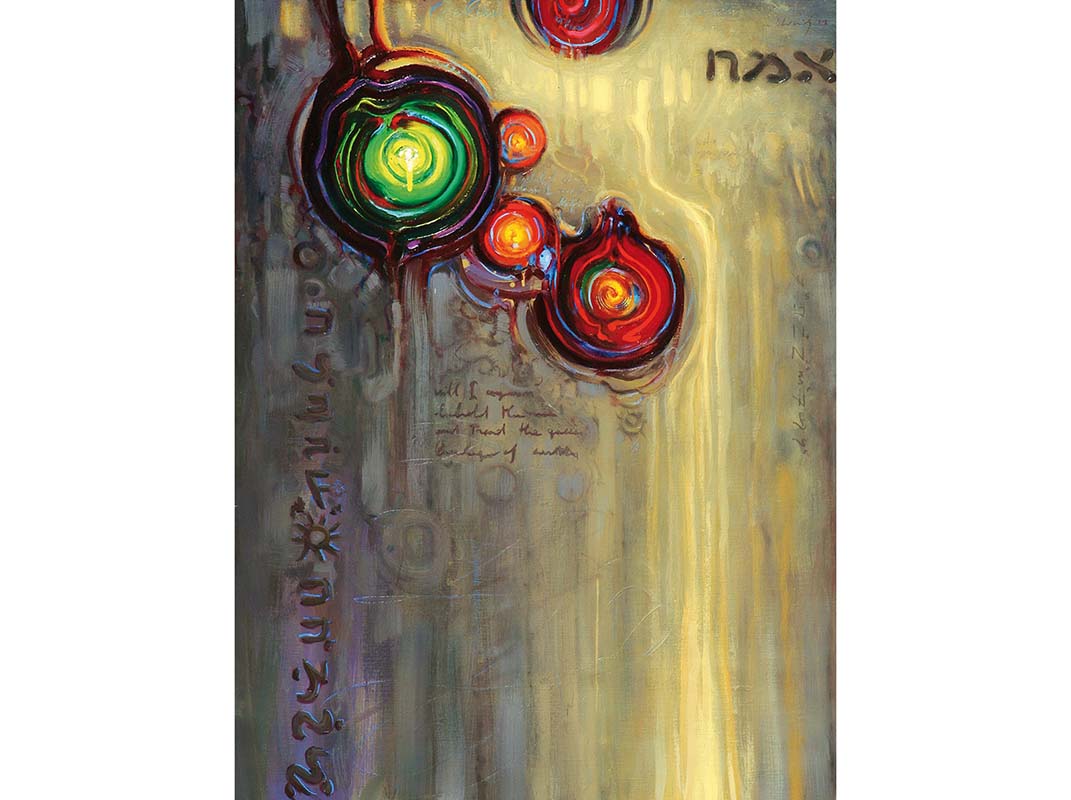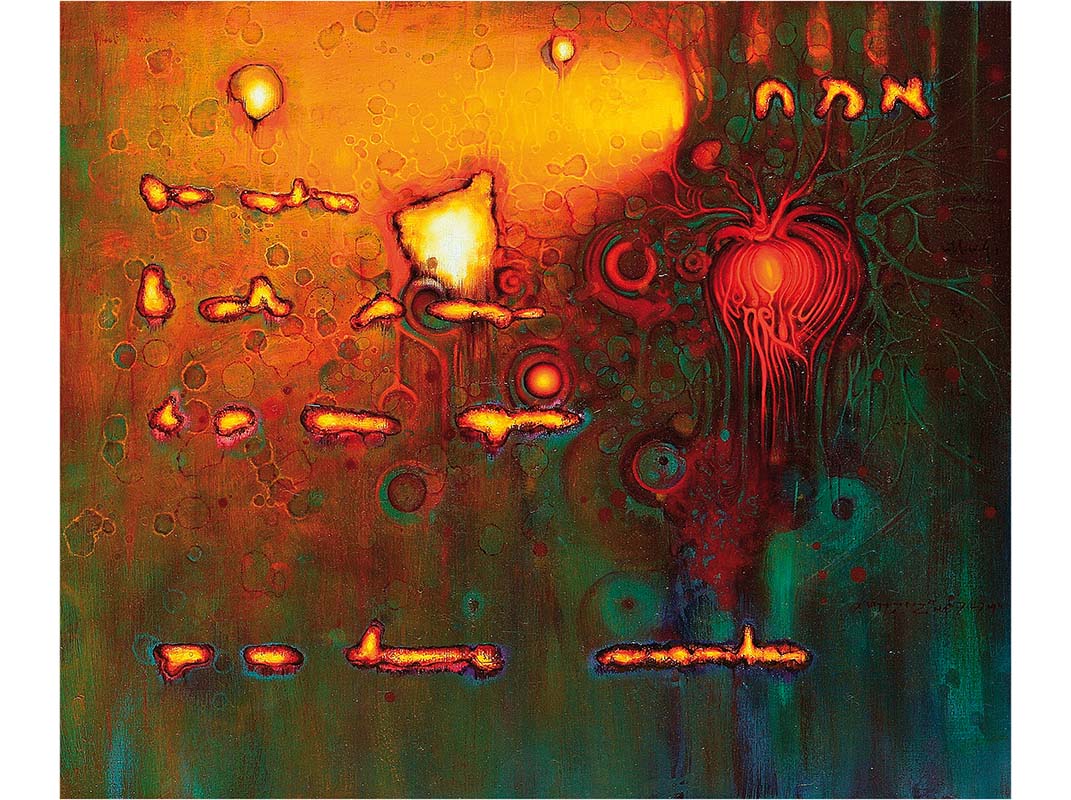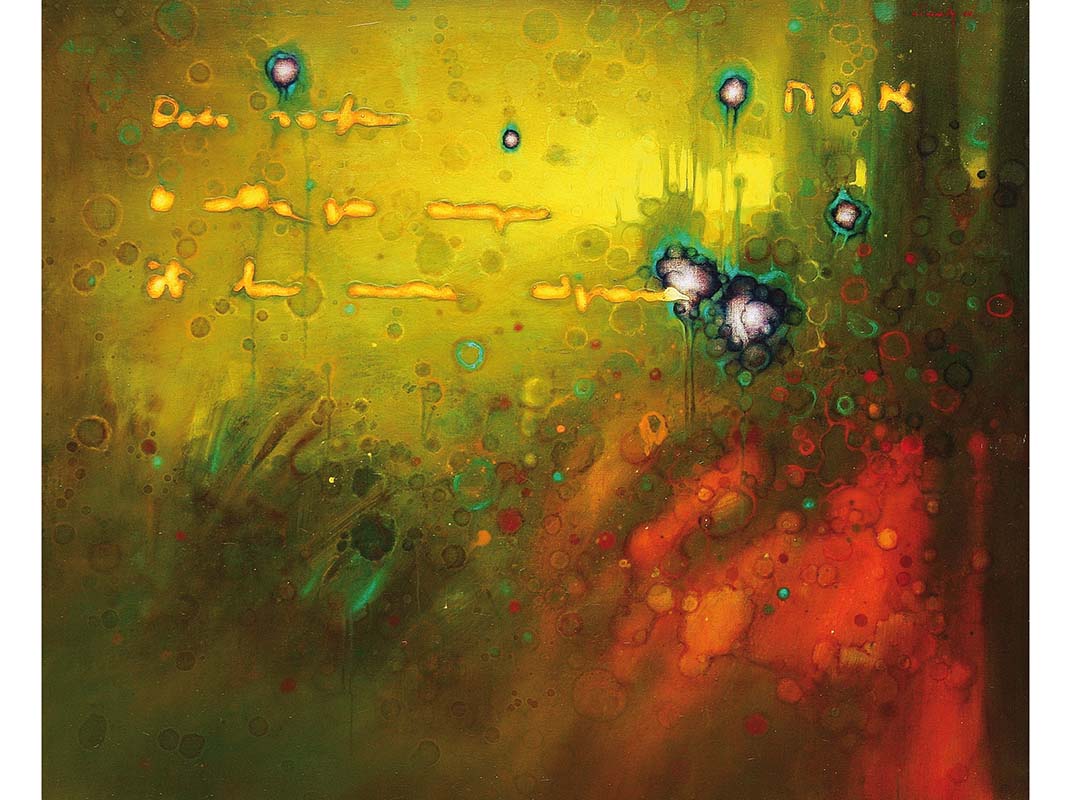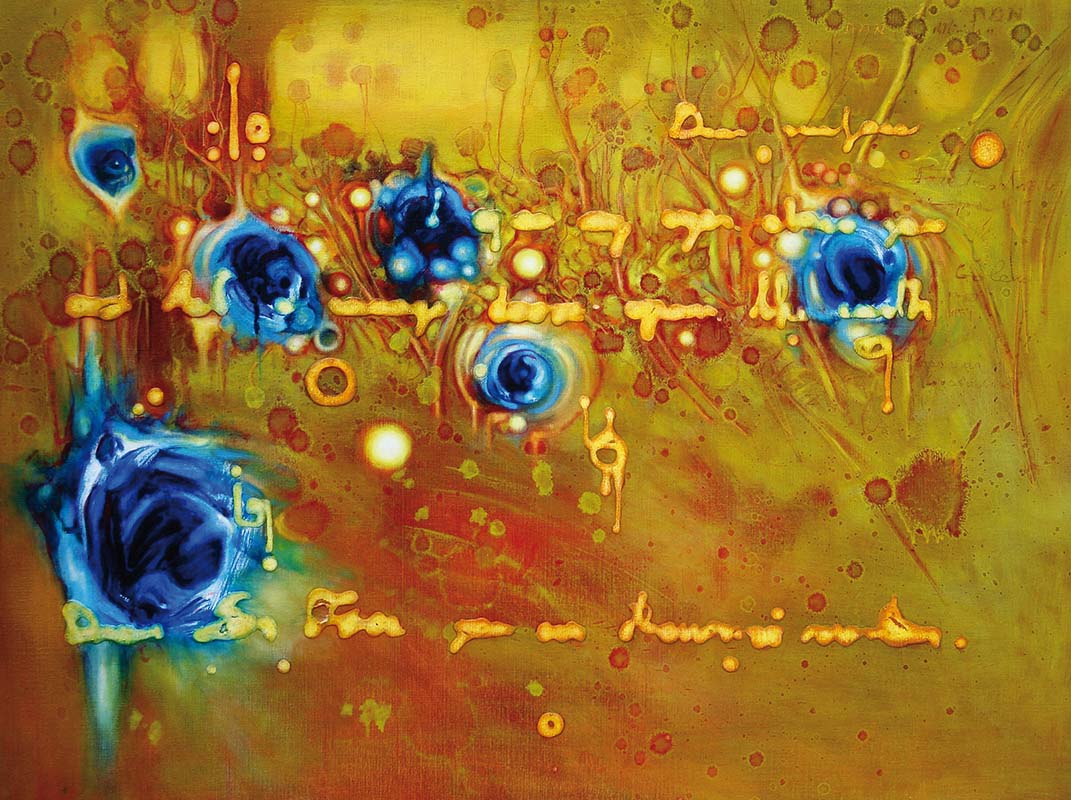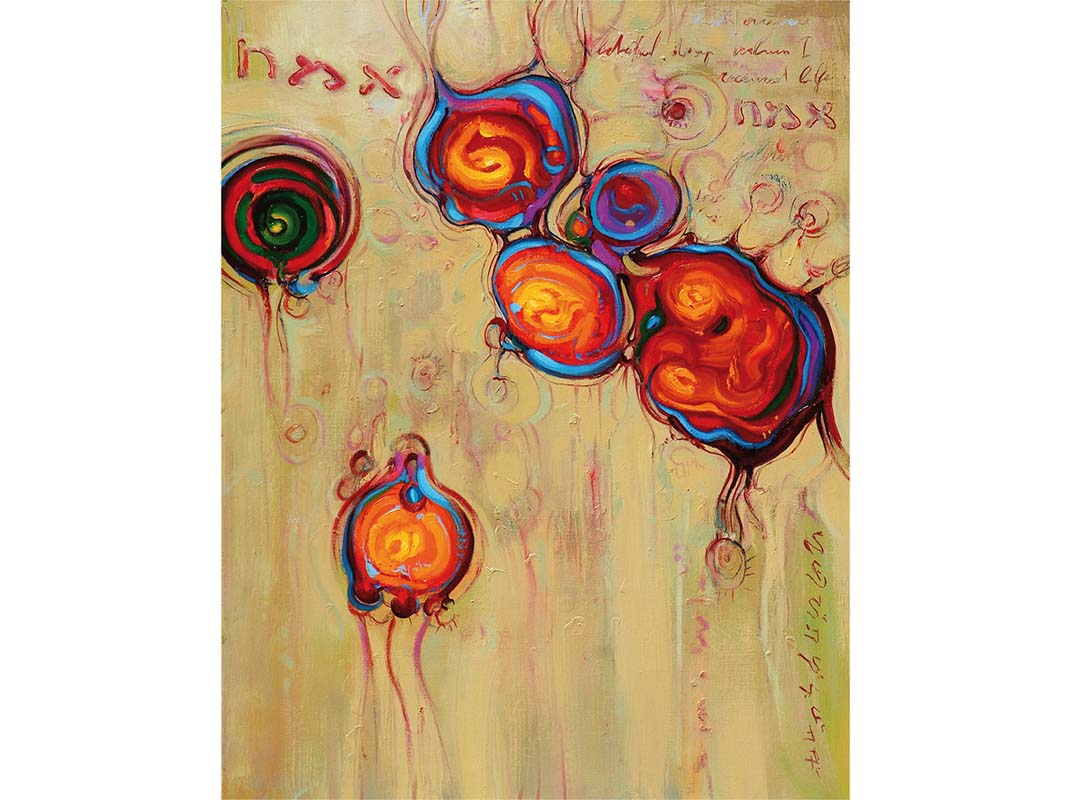Francesco Villicich is not your average artist. The process through which his paintings are conceived, develop, evolve, and are brought to conclusion is not a straightforward one-on-one relationship between he and the canvas, with a full knowledge and understanding of who is in charge. It is instead through a constant metamorphosis of inspiration and ideas that colours and forms take shape, almost as if it is the canvas itself that answers back to stimulations and dictates what comes next. The basic narrative is evident since Francesco is, in essence, a landscape artist, superimposing the physical beauty of existing panoramas to the amorphous landscapes of his imagination. However, it is this imagination and the self-evolution of the works that play the most important part in the final result, especially in his latest paintings. Although sometimes their large size, the strong and unapologetic palette, the complexity in the layering of the forms, and the seemingly complicated message they convey may create an initial barrier between the canvas and the viewer, Francesco’s works need patience and commitment in order to be fully appreciated and to offer a connection with the artist at a different level of understanding. The fulfilment and recompense one can achieve through this process is unlike many other experiences with works of art. This is what makes him an accomplished artist, true to the core of his practice. The present body of work is a further step in this direction, with growing layers of complexity that throw at us everything he cares about: the four elements, the depth of the landscape, the mystical writings of ancient alphabets as well as verses by Australian poets, the organic growth of the vegetal and the mineral worlds, and the organs of the human body. All this is based on the concept of infusing life into his creations similarly to Frankenstein’s attempt to give life to his creature in Mary Shelley’s account. Avoiding the later, romanticised reinterpretations of the tale of Frankenstein, Francesco goes straight to the philosophic and poetic core of Shelley’s work, extracting its raw essence and appropriating it through his paintings. As the viewer will experience, the “Frankenstein” paintings are numbered in the exhibition in chronological creative order, from the earliest to the most recent. It is evident that Francesco has progressively moved from the dark tonalities of the initial moments, when he took the first steps of his journey, to the recent, luminous paintings where this journey progressed to attain its positive end. A couple of additional thoughts came to mind while I was viewing and discussing with Francesco his recent works. One relates to their musicality in a broad sense. His paintings possess, in my opinion, an inner orchestral rhythm that makes them come to life not only to the eye but also to the ear, in particular through the music of Russian composers. It is almost as if I could hear the soundtrack of Mussorgsky’s Night on Bald Mountain, or even more of Stravinsky’s ballet music for The Rite of Spring. I find this association particularly uncanny because Francesco was an acclaimed classical dancer of international renown before he retired and became a full-time artist. He will probably find it amusing that I see a strong association between his two most important artistic endeavours. The second thought is about the three-dimensionality of his paintings and the tactile feelings that they impart to the viewer. These amoeba-like forms and dripping bodies almost beg to be touched and handled in order to exorcise the uneasy feeling of mystery that they initially convey. For this reason I was ready to ask the question as to how Francesco, as an artist, would satisfy this type of curiosity and “touchy-feely” need on the part of viewers like me. He provided an unexpected and immediate answer to the question I never needed to ask: he is also a sculptor and has created some three-dimensional works which, employing found material and a generous amount of paint, provide a natural extension and complement to his paintings. As I wrote at the beginning, Francesco Villicich is not your average artist. His passion and commitment to his work and his desire to communicate his feelings, fears, and love are unlike many artists whom I know. His spirit is romantic in the literary and musical sense, prioritising feelings over order, vision over reality, ideals over practical solutions, and impracticability over mundane concerns. read more... read less
FRANCESCO VILLICICH
FRANKENSTEIN
FRANKENSTEIN EXHIBITION
"The Frankenstein Series is the visual incarnation of the plight to infuse life into lifeless matter. The tools employed are archetypes, choreographies of symbols, colour, darkness and most importantly, light." Francesco Villicich 2012
Introducing an Artistic Journey:
Dr Stefano Carboni
Director, Art Gallery of Western Australia
Francesco Villicich is not your average artist. The process through which his paintings are conceived, develop, evolve, and are brought to conclusion is not a straightforward one-on-one relationship between he and the canvas, with a full knowledge and understanding of who is in charge. read more...
The Frankenstein Series
Alessandra D’Arbe, Curator, Perth 2012
The artist’s personal research and affinity with nature during the course of his life led him to the realisation of a landscape as a living entity, with emotional capacity and self-determination. In his work, the ultimate goal is comparable to that of the character read more...
LIST OF WORKS
-
Frankenstein 1, 2011
91 x 121 cm
oil and gesso on linen
-
Frankenstein 2, 2011
60 x 91 cm
oil and gesso on linen
-
Frankenstein 3, 2011
91 x 121 cm
oil and gesso on linen
-
Frankenstein 4, 2011
91 x 121 cm
oil and gesso on linen
-
Frankenstein 5, 2011
150 x 200 cm
oil on linen
-
Frankenstein 6, 2011
122 x 152 cm
oil on linen
Frankenstein 7, 2011
107 x 167 cm
oil and gesso on linen 2011
Frankenstein 8, 2011
120 x 180 cm
oil and gesso on linen
Frankenstein 9, 2011
60 x 66 cm
oil on linen
Frankenstein 10 “Talisman”, 2011
122 x 152 cm
oil on linen
-
Frankenstein 11, 2011
91 x 111 cm
oil and gesso on linen
-
Frankenstein 12, 2011
91 x 111 cm
oil and gesso on linen
-
Frankenstein 13, 2011
83 x 101 cm
oil and gesso on linen
-
Frankenstein 14, 2011
60 x 100 cm
oil, canvas, staples, nails, hair, on linen on board
-
Frankenstein 15, 2011
140 x 230 cm
oil and gesso on linen
-
Frankenstein 16, 2011
101 x 121 cm
oil and gesso on linen
Frankenstein 17, 2011
102 x 102 cm
oil and gesso on linen
Frankenstein 18, 2011
60 x 90 cm
oil on linen
Frankenstein 20 “Ave Maria”, 2011
152 x 120 cm
oil on linen
Frankenstein 21, 2011
71 x 154 cm
oil on linen
-
Frankenstein 22 “The flowers of Spring”, 2012
121 x 151 cm
oil on linen
-
Frankenstein 23, 2012
101 x 84 cm
oil on linen
-
Frankenstein 24 “Friedrich”, 2012
91 x 101 cm
oil on linen
-
Frankenstein 25, 2012
83 x 101 cm
oil and gesso on linen
-
Frankenstein 26, 2012
60 x 90 cm
oil and staples on linen on board
-
Frankenstein 27, 2012
122 x 91 cm
oil on linen
-
Frankenstein 28, 2012
84 x 66 cm
oil on linen
-
Frankenstein 29 “Zatoichi”, 2012
152 x 198 cm
oil on linen
-
Vitae 1, 2012
113 x 30 x 20 cm
wood, iron, wire, nails, oil paint, enamel paint
-
Vitae 2, 2012
103 x 32 x 23 cm
wood, iron, wire, nails, oil paint, enamel paint
-
Vitae 3, 2012
105 x 30 x 25 cm
wood, iron, wire, nails, linen,
oil paint, enamel pain

